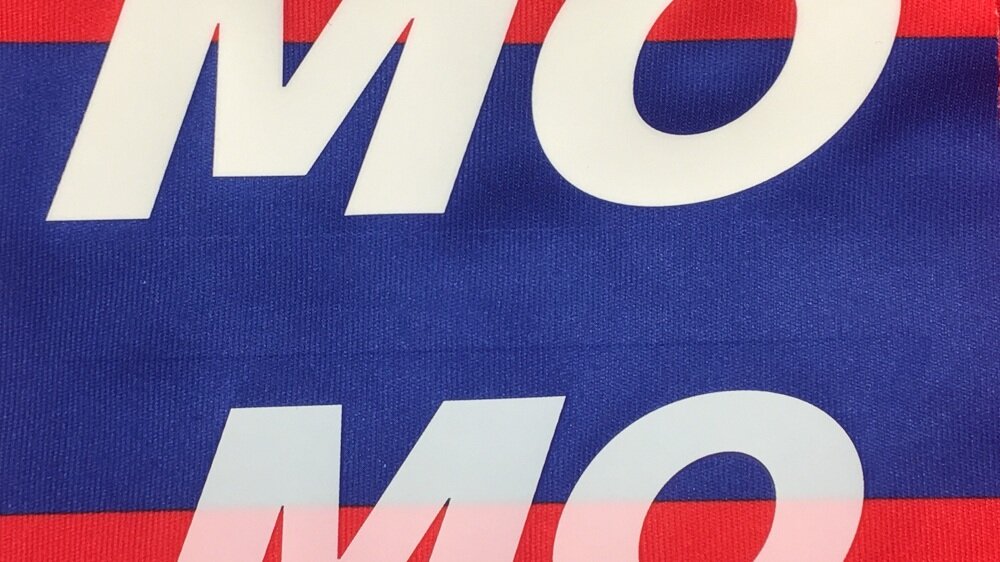Application tips
When mounting heat transfers on textiles, it is important to use the correct temperature, pressure and time.
Data for application is adapted to each individual fabric quality, therefore we have made a simple overview to help you set the heat press correctly for different garments.
Workwear
For labeling of impregnated and tightly woven fabrics, a high temperature is used during application. For garments that are to be boiled, the highest temperature range must be used. Also applies to beaver nylon.
Recommended bonding data:
- Temperature: 180–190 ° C
- Time: 10-12 seconds
- Pressure: 1.5-2 kg / cm 2 on the mark
- Removal of carrier film: When the transfer has cooled down
- Recommended on tightly woven and impregnated fabric: Preheat on the garment for 5 seconds, reheat 5 seconds on the transfer.
Sportswear and corporate clothing
On temperature-sensitive substances, low temperatures should be used when applying labels.
Recommended bonding data:
- Temperature: 140–160 ° C
- Time: 10 seconds
- Pressure: 1.5 - 2 kg / cm 2 on the mark
- Removal of carrier film: When the transfer has cooled down
- Recommended on tightly woven and impregnated fabric: Preheat on the garment for 5 seconds, reheat 5 seconds on the transfer.
REFLEX transfers
Recommended bonding data AGi REFLEX:
- Temperature: 150–160 ° C
- Time: 10 seconds
Important: To prevent reflective beads that are on the carrier foil from sticking to the garment: Use slightly less pressure than on «regular» heat transfers: For example: 4 bar on a large base plate and 1.5 bar on a small base plate Remove the foil when the transfer is cooled, at the earliest after 20-30 seconds Note: Reflective quality is not as elastic as our regular transfer due to the fact that reflective beads can "crack" with a lot of tension.
Recommended bonding data Precision™ Reflective:
- Sportswear and corporate clothing:
- Temperature: 140–150°C
- Time: 10 seconds
- Workwear:
- Temperature: 160–180°C
- Time: 10–12 seconds
- Pressure : approx. 2.0 bar on small base plate, and approx. 6 bar on large base plate.
Carrier film is removed cold.
Plotter transfers / Plotter names
Can be ordered down to 1 pc.
Recommended application data:
- Temperature: 160 ° C (150–175 ° C, depending on textile quality)
- Time: 15-25 seconds
- Normal pressure support film is removed immediately after application
- Re-press for 2 seconds is recommended
Softshell
Softshell is a textile that can be heavily dyed compared to other types of garments. This can lead to colour migration on an applied heat transfer. This means that over time after application, "dots" of the garment's colour can appear through the transfer. The biggest challenge is related to light logos on dark or red garments.
To avoid migration:
- Order a heat transfer with an extra layer of colour printed on the back of the badge. In our webshop, the choice is called «Blocking Black».
- Blocking Black is charged as an additional color.
- On softshell: Apply the transfers with a lower temperature than one would otherwise use: 140 ° C for 10 seconds. Do not have too high a pressure.
Examples of other textiles with challenges related to migration / dyeing are also printing of transfers in light colours that are to be printed over stripes dyed in a football shirt. Blocking black is also a big advantage here.

NB! Application data must be adapted to each individual fabric quality for optimal hold. The use of Teflon sheets is recommended
Remember! The garment must not be washed or tested until the mark has hardened, 36 hours after application.
For settings of pressure on heat presses, go to pressure tables .
Storage of heat transfers / best before:
Heat transfers are stored at normal room temperature and should not be exposed to direct heat radiation. Avoid stacking in height, moisture and dust. We recommend our customers to buy products for one year of consumption at a time. The products are best before: 12 months. After this, the products will gradually lose their properties.
Do you have questions? Feel free to contact us .
IMPORTANT / DISCLAIMER:
The advice and tips above can help significantly, and are given by us in good faith, but are no absolute guarantee. It is your responsibility as a customer to test our product against the relevant intended textile as the textile's design, possible impregnation etc is not something we have control over. Apply transfers on one garment first, and evaluate the result, before any more garments are marked. Feel free to send us garments for testing if desired. Testing is a service that we perform for free for our customers and we have one of Europe's leading Test Centers for transfers.
Avery Dennison NTP disclaims financial responsibility for products that are incorrectly labeled. It is the customer's responsibility to check that received transfers are in accordance with proof reading and ordering before the transfers are applied.
